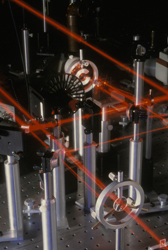Solar cell connections in lightning speed
The PV industry is poised for major market penetration if it can address issues related to efficiency and cost. Aside from innovations in materials, changes in processing or manufacturing offer the potential for significant cost reductions. Scribing, the process by which solar panels are etched to form microchannels that electrically connect cells in an array to produce high power output, is conventionally accomplished mechanically. Laser scribing could make a significant impact on fabrication time and costs while enhancing product performance. Scientists initiated the EU-funded project 'Advanced lasers for photovoltaic industrial processing enhancement' (ALPINE) to develop a new high-brilliance laser with exceptional beam quality based on photonic crystals. Further, it will be designed for scribing thin-film flexible PVs rather than standard PVs based on crystalline silicon (Si) wafers. A tremendous amount of work has been done so far on both the development of PV devices and on laser scribing. During the previous project period, two more scribing sites became active, significantly boosting data collection and information exchange regarding processing configurations. Scientists tested laser scribing on glass substrates with great success. Scribing flexible substrates has proved challenging yet work is ongoing and has been met with continued interest by the scientific and industrial communities. ALPINE is combining Europe's talent in photonics and laser applications with the growing field of PV technologies for a win–win situation. Successful scribing on glass is a major milestone and is expected to decrease costs and delivery time while enhancing performance. Further advances in scribing flexible thin films promise increased growth for manufacturers of both PVs and laser technologies.

